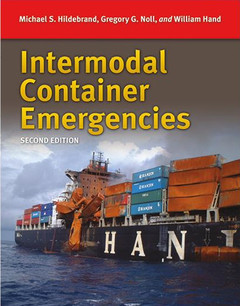Description
Intermodal Container Emergencies (2nd Ed.)
Authors: HILDEBRAND Michael S., NOLL Gregory G., HAND Bill
Language: English
Subjects for Intermodal Container Emergencies:
Approximative price 44.62 €
In Print (Delivery period: 14 days).
Add to cart112 p. · Paperback
Description
/li>Contents
/li>
Intermodal Container Emergencies, Second Edition is designed to provide public safety and industry emergency response personnel with the background information, general procedures, and response guidelines to be followed when operating at an incident involving intermodal containers. This information will assist the user in meeting the knowledge requirements of National Fire Protection Association (NFPA) 472, Competence of Responders to Hazardous Materials/Weapons of Mass Destruction.
The terminology used throughout this text is based on the terms adopted by the United Nations, Recommendations on the Transport of Dangerous Goods—Model Recommendation’s, Nineteenth Edition, New York and Geneva.
Intermodal Container Emergencies, Second Edition contains comprehensive content covering:
- Intermodal container design and construction features
- Purpose of an intermodal container
- Codes, standards, and regulations related to intermodal containers
- Marking systems and hazardous materials placards
- Intermodal freight containers
- Non-pressure intermodal tank containers
- Intermodal tank containers for gases
- Railroad, marine and fixed facility operations
- Response to incidents involving intermodal containers
- Uprighting, product removal, and transfer operations
- Safety guidelines for transfer operations
- Chapter 2. Codes, Standards, and Regulations
- Chapter 3. Intermodal Container Marking Systems and Hazardous Materials Placards
- Chapter 4. Intermodal Freight Containers
- Chapter 5. Non-Pressure Intermodal Tank Containers
- Chapter 6. Intermodal Tank Containers for Gases
- Chapter 7. Intermodal Container Operations
- Chapter 8. Emergency Response
- Chapter 9 . Uprighting, Product Removal, and Transfer Operations

